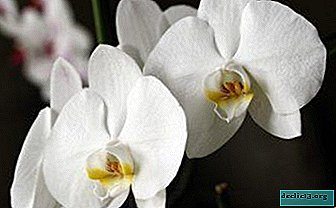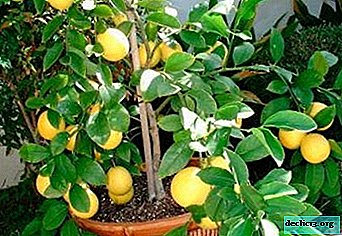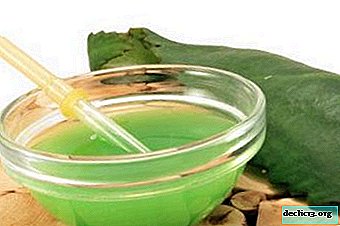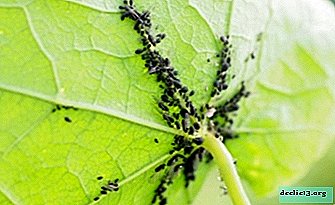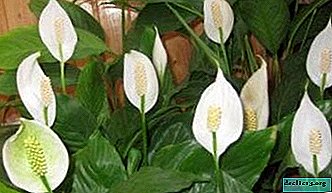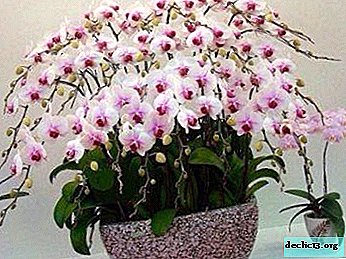Medical Scutellaria: species, photos and growing a valuable flower
 Many beautiful plants belong to the genus scutellaria or scutellaria, which many gardeners enjoy using in flower arrangements.
Many beautiful plants belong to the genus scutellaria or scutellaria, which many gardeners enjoy using in flower arrangements.
However, among the skullcap there are many species, in addition to beauty, which have impressive healing properties, which makes them even more desirable in the garden.
In the article we will tell many interesting facts about scutellaria, show a photo and analyze its healing properties. You will also learn how to properly care for such a flower and how to propagate it.
What is it like?
What is this plant? The genus Shlemnik belongs to the family Labiaceae or Iasnatkovye. These are large herbaceous plants, usually semi-shrubs, less commonly shrubs. Representatives of the genus Scutellaria are found all over the world, with the exception of Antarctica, while the greatest diversity of species is observed in Central Asia.
The scientific name of the genus is Scutellaria, from the Latin word scutellum - "small shield". Confusion has occurred with the Russian name of the genus: it is a translation of an outdated Latin name of the same genus - Cassida, from cassis - "helmet". The name was given to a peculiar form of flowers, really resembling a helmet.
However, later, with a more careful study of the structure of the flowers, the researchers found an unusual feature in them - an appendage in the form of a shield located at the base of the cup. This small appendage plays an important role in the distribution of seeds: during ripening, the fruits press on it, and after ripening they become light, and the “shield” acts as a lever - it “shoots” seeds with a considerable distance. After this unusual mechanism was studied, the species was renamed, however, in Russian, these plants continued to be called inertia by Scutellaria.
Representatives of the genus Skutellaria - shrubs on average 40 cm in height, with long stems grassy at the top and lignified at the base. The shape of the leaves is very different - from long, narrow and elongated ribbons to tiny rounded scales. The color of the leaves is also diverse - all kinds of shades of green, from bright emerald to grayish-dusty.
The flowers are located in the leaf sinuses, the number of flowers in one sinus depends on the species - one or two flowers, as in Scutellaria vulgaris, or a whole magnificent inflorescence, similar to a brush, like in Costa Rican scutellaria. Each flower consists of two lips - the upper, concave, with a characteristic limb in the form of a helmet (which gave the original name the appearance), and the lower, flat. The fruits of Scutellaria are rounded nuts.
Interesting! Another characteristic feature of all representatives of the genus Skutellaria is pubescence of thin hairs over the entire surface of the plant.Popular views and their photos
The genus Skutellaria is very extensive, to date, 468 species belonging to it have been described. It is worth telling about the most famous:
Common (Scutellária galericuláta)

Also known as St. John's wort is the most common species. You can meet him almost everywhere - in Central and Eastern Europe, the Mediterranean, Scandinavia, Western and Eastern Siberia, Central Asia, China, Mongolia, Japan and even North America. This outwardly modest plant with small lilac flowers was the first described and studied representative of its kind. He is for him a typical species - a botanical "model", which are guided by, describing the characteristics of the genus as a whole. Scutellaria vulgaris is widely used in folk medicine as a remedy for malaria, as well as as a hemostatic agent.
Baikal (Baicalensis)

The most famous species, famous for its medicinal properties. The natural habitat of the Baikal skullcap is the area of Lake Baikal, Mongolia and the north of China, so it is most popular in Chinese medicine, where it is considered to be a practically universal remedy for all diseases.
In Chinese and folk medicine, it is used primarily as a hemostatic and vasodilator, it is also used to accelerate wound healing.
More details about Baikal skullcap and its cultivation are discussed here, and its healing properties are written here.
Costarican scutellaria (Scutellaria costaricana)

The only representative of the genus grown indoors. This plant attracts attention with its unusual and spectacular flowering - bright scarlet cups are collected in lush brush-like inflorescences, which can be up to a dozen on one bush. Also This exotic southern flower is remarkable for its unpretentious simplicity and ease of care..
Therapeutic use
Plants of the genus Shlemnikov are widely used in folk medicine, despite the fact that not all of them are pharmacopoeial (that is, they are included in the official list of medicinal plants with established quality standards). Scutellaria baicalensis is especially popular - an almost universal plant with many fields of application.
Why use scutellaria? Due to the high content of flavonoids, tannins. as well as micro and macro elements (especially iron, zinc, cobalt), Scutellaria baicalensis is used for:
- heart rhythm disturbances;
- initial stage of hypertension;
- chronic fatigue and insomnia;
- neurosis;
- myocarditis;
- colds - as an antipyretic.
It is also used as a hemostatic and anti-inflammatory agent. Scutellaria baicalensis is used as the main component in natural choleretic preparations and fees to normalize the liver.
There are practically no contraindications for medicines based on Scutellaria baicalensis. The only limitation is that it is not recommended for children under 12 years of age.We recommend watching a video about the healing properties of this plant:
Growing a house
As a decorative home plant, only one type of scutellaria is used - Costa Rican scutellaria. This plant impresses with its appearance - bright brushes of scarlet flowers against a background of wide dark green leaves. Moreover, an exotic flower from Central America is surprisingly easy to grow and care for.
Scootellaria prefers light, water and breathable soil. For planting a house, a universal substrate for flowering plants or a mixture of sand, turf and leafy soil is quite suitable.
Breeding
Costa Rican scutellaria can be propagated by cuttings or seeds. Propagation by cuttings is more popular among gardeners, since the likelihood of rooting and engraftment of a flower is higher.
Cuttings
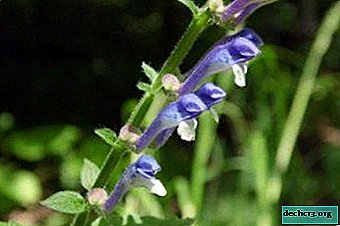 As cuttings, cut young shoots are used.
As cuttings, cut young shoots are used.- Cutting shoots for these purposes is best in summer, preferably at the end.
- The cuttings for transplantation should be no shorter than 10 cm and have at least two leaves.
- Cuttings are planted in a peaty-sandy or peaty-pearlitic wet substrate.
- Before planting, it is desirable to treat them with special root formation stimulants, for example, heteroauxin.
- To create greenhouse conditions, the container with cuttings is wrapped in plastic wrap or covered with a glass or plastic cap (a cropped plastic bottle is suitable).
- For successful germination of shoots, it is necessary to maintain a constant temperature of at least 25 degrees, it is also desirable to use lower heating.
- The substrate must be regularly moistened and aired daily.
Seeds
This method is used much less frequently, however, it is quite possible to propagate the plant in this way.
- First you need to prepare the soil - peat-sand or peat-pearlite.
- Seeds are placed in a moist substrate at a shallow depth and covered with glass or wrapped in a film.
- For germination, the seeds need a temperature of at least 25 degrees.
- The substrate must be regularly moistened and ventilated to prevent decay and fungus development.
- After the seeds germinate, the container must be transferred to a well-lit place, shaded from direct sunlight.
- After the first pair of leaves appear on the shoots, it is possible to plant in separate pots.
Care
When caring for scutellaria, you need to remember a few simple rules:
- Like all tropical plants, scutellaria loves bright sunlight, but not direct, but diffused. It is best to place pots with plants on the eastern or western windows.With a lack of lighting, the plant will not die, but will stop flowering.
- An important condition for the growth and development of a flower is a moist substrate. Skutellaria needs to be watered abundantly, even in winter - although during cold seasons the frequency of watering is slightly reduced. For watering, soft water is used at room temperature or slightly warmer.
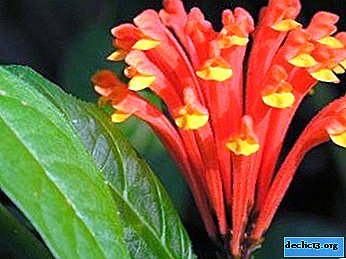 The flower also needs high humidity - it needs to be sprayed regularly, as well as periodically arrange a "shower" for the plant. It is recommended to place the pot on a pallet with wet expanded clay.
The flower also needs high humidity - it needs to be sprayed regularly, as well as periodically arrange a "shower" for the plant. It is recommended to place the pot on a pallet with wet expanded clay.- Scutellaria feels good at room temperature - up to 25 degrees. In winter, it is able to withstand temperature drops of up to 18 degrees. Unusual for a tropical exot, a feature of scutellaria is air loving. She is not afraid of drafts, moreover, periodic airing is vital for her. The only thing that should not be allowed is a sharp contrast of temperatures, for example, too cold drafts.
- Skutellaria is characterized by active growth and flowering, therefore, to maintain strength, it needs regular top dressing. From March to August, the plant is fed every one and a half to two weeks, in the period from September to February, a sufficiently reduced dose once a month is enough. Preference should be given to fertilizers with a high content of phosphorus and calcium - they will provide lush and beautiful flowering.
- Unlike most flowering houseplants, scutellaria does not need special measures for the formation and thickening. Pruning this flower is highly discouraged. To care for the plant, simply removing the wilted flowers is enough - it is better to do this as soon as possible, without waiting for drying, since dead inflorescences shorten the flowering period.
Disease
- Knowing the moisture loving nature of this plant, many gardeners water it too hard, because of which the water in the pots stagnates, and root decay begins. This is the most common mistake when caring for scutellaria. When decaying the roots, only the correction of the irrigation regime can help.
- Another common problem is the defeat of fungal diseases. They, as a rule, also develop from excessive waterlogging.
- Of the pests, the aphid is the most dangerous. Less commonly, thrips and spider mites can infect a plant.
The genus of Shlemnikov is extremely diverse. Among the species of Scutellaria there are not only medicinal plants - there are many decorative species, however, for home cultivation the most exotic - Costa Rican scutellaria is most in demand. This bright and beautiful plant, unlike most exotics, is easy to grow at home, which makes it even more popular.

 As cuttings, cut young shoots are used.
As cuttings, cut young shoots are used. The flower also needs high humidity - it needs to be sprayed regularly, as well as periodically arrange a "shower" for the plant. It is recommended to place the pot on a pallet with wet expanded clay.
The flower also needs high humidity - it needs to be sprayed regularly, as well as periodically arrange a "shower" for the plant. It is recommended to place the pot on a pallet with wet expanded clay.